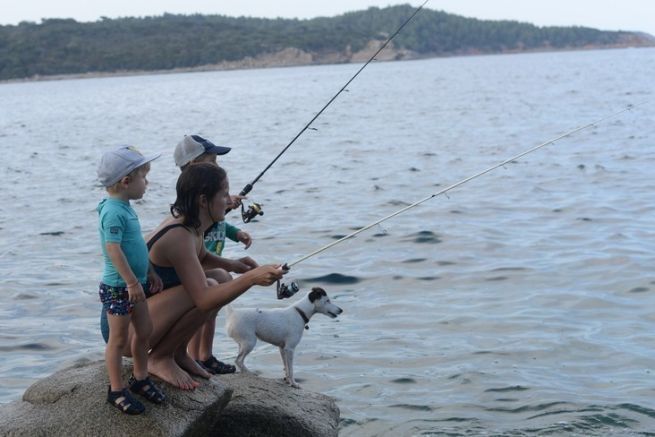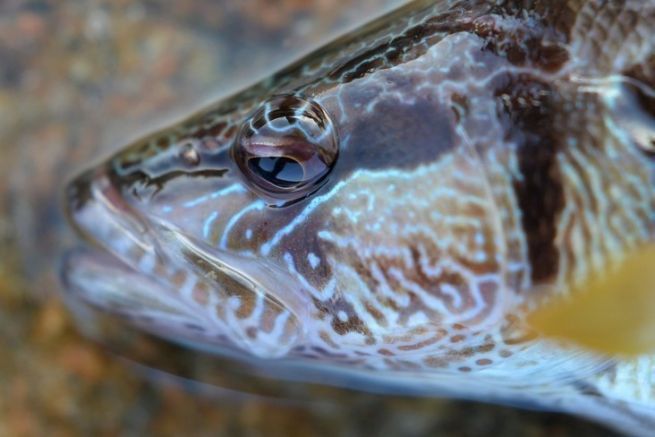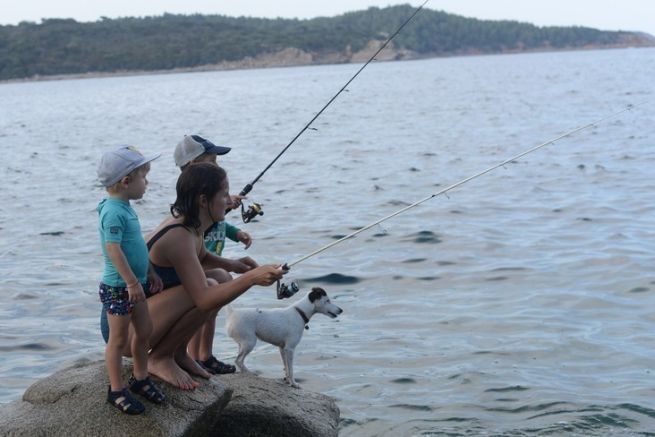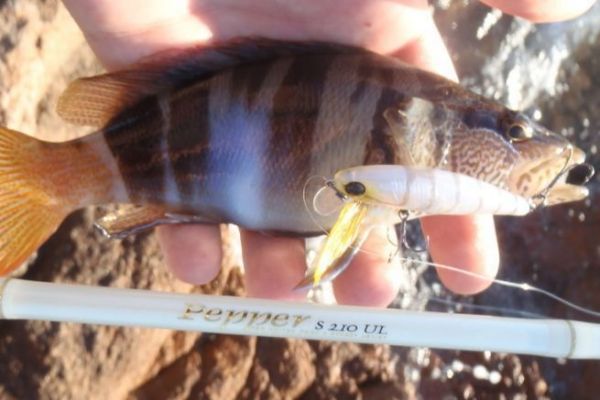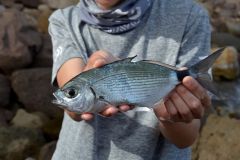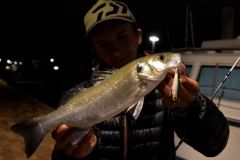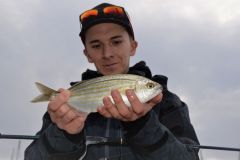The serran is an easy fish to catch. It's perfect for beginners, but also for those who want to improve their skills and become familiar with other techniques and approaches, with a view to diversifying their catches later on.
Light game fishing
Serran can be fished with both hard and soft lures. There are two possibilities when looking for this fish. The first is to fish relatively deep areas (over three meters). In this case, you'll need to fish deep to flush out the snappers stuck close to the bottom. The second case is when the bottom is shallow, and you're better off fishing with a hard lure or a soft lure with a light lead. In both cases, there are a few things in common.
This opportunistic little predator violently attacks anything that comes within range of its marker. One of the most important points when fishing for it is to find an area where the bottom is mostly made up of boulders, which form innumerable hiding places. Another important point is water transparency. This small hunter, which feeds by sight, needs high visibility to hunt. This means daylight fishing in clear water.
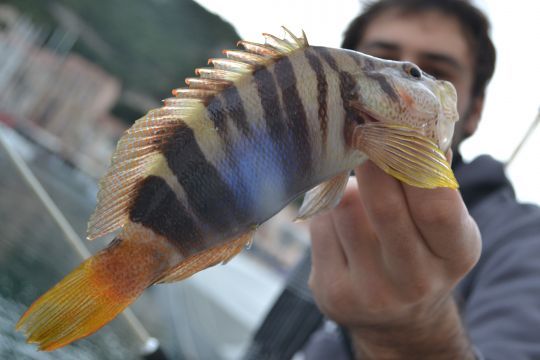
As far as I can remember, I can't recall ever having lured a redfish at night! Finally, remember that whatever the depth of the water, the lure has to swim and twirl in a jerky, aggressive way to trigger the almost systematic attack of the redfish. This is an important point which makes the difference between a fishing trip with just a few fish and a successful session with plenty of fish to immortalize in photographs!
Let's start with "deep water" fishing. In harbours or small pools (over three metres) I use soft lures. To avoid leaving too much rig on the bottom of harbours, I opt for a mini Texan rig. Let's not forget that fishing is practised on a bottom cluttered with boulders. It's nothing more and nothing less than a rig designed to fish black bass, but in a light version particularly suited to small rock fish. This rig allows you to fish slowly on the bottom while minimizing the risk of snagging. It sinks quickly and allows you to reach fishing depth quickly. What's more, this rig guarantees a smooth swimming action.
To make it, I set a No. 2 to 6 Texan hook ( type finesse wide gap illex ) and a two- to six-gram tungsten bullet ( tungten bullet illex which has the advantage of a plastic sheath that protects the knot and limits abrasion on the leader).
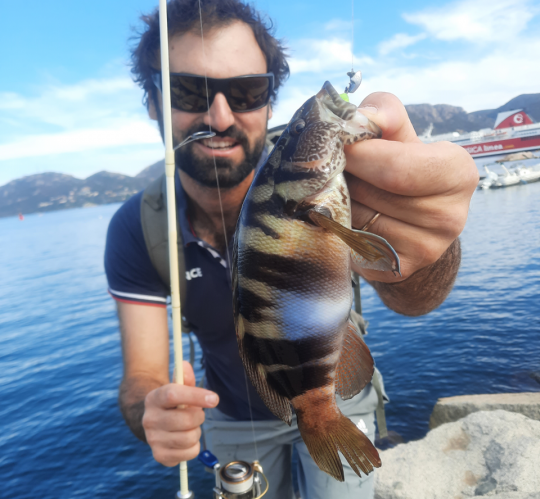
On this Texas hook, I use a soft lure measuring two to three inches (five to seven and a half centimetres). The important thing is that this lure has a small cross-section or a high degree of flexibility, so that the tip of the Texan hook clears perfectly when striking. This parameter is all the more important when fishing with very small Texas hooks. As the fish are small, the fish's inertia is less pronounced and the hooking process more trivial than with large fish.
My favorite lures in this exercise are small shads, small creatures or imitations of shrimp or crayfish. These soft-textured lures are easy to get the hook point out of, for a high ratio of successful hook-ups.
With soft lure, but also with metal jig
In deep water, you can also use small metal jigs waddled dry, which are also very effective. But the risk of snagging on the bottom is relatively high... They should be used when fishing almost under the rod, to limit the number of snags. This type of lure should also be waddled dry. There are a few small metal jigs on the market, such as Rein's palputin or Illex slow lazy jig.
Fishing in shallow water with swimmer fish
When the bottom is shallow (between fifty centimetres and two metres), I prefer to use swimming fish. In addition, you need to be able to animate your lure aggressively, so as to trigger the attack of the redfish. Fingerlings are a favorite prey of snappers, and are a real treat. A well-presented swimmer fish will make the sunfish react instantly or even mechanically. Instinctively, our sea perch will rise into the water to intercept it.
For this type of fishing, I prefer small minnows or jerkbaits. These lures have a tapered shape, perfectly imitating a fry, and it's easy to make them perform large darts, which is not the case with crankbaits, for example. Their size ranges from four to six centimetres. The heavier the sea conditions, the heavier the fishing.
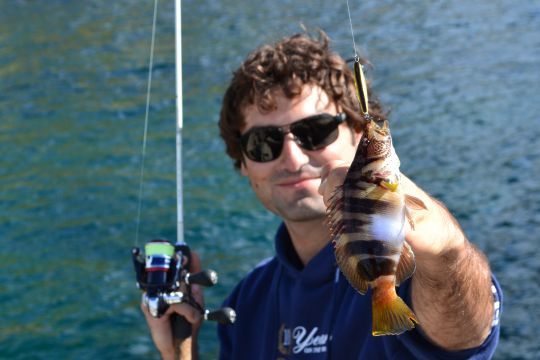
In calm seas, I use Illex Tiny Fry 38 and 50 in a suspending version (same density as the water and therefore staying in suspension, making it easier to trigger attacks). I also use Smith's Shirasu 48 LLS, which is also very imitative. When there's a bit of swell or wind, I switch to sinking lures. I then opt for the new Tiny Fry 50S (S for Sinking) or the tricoroll 47S or HW (HW for Heavy Weight, very dense and fast-sinking) will be perfect. Heavy-weight lures have the advantage of being able to be cast far and accurately, even in windy seas.
As far as colors are concerned, whether for soft or hard lures, I prefer natural, transparent or brilliant colors. As already mentioned above, you need clear, bright water to fish for redfish. Imitation and realistic lures stand out from the crowd when it comes to fooling snappers.
Soft lure with suitable ballast
In these shallow areas, I not only use hard lures, but also some soft ones. I rig small shads on a pointed sinker head (type straight jig head 2 grams by Illex). The pointed shape of the lead head combined with a small shad allows the lure to perform what are known as "darts".
Darting" is the name given to a type of animation that consists in provoking lateral deviations in the lure, thanks to dry pulls printed with the rod. As with hard lure fishing, you'll need to jerk and work your lure dry enough to provoke the aggressiveness of the serran. The lure needs to swim fairly close to the bottom in a lively and unpredictable manner. To achieve this, you'll need to bring your lure in low or sideways, and add twitchs and jerks to your animation.
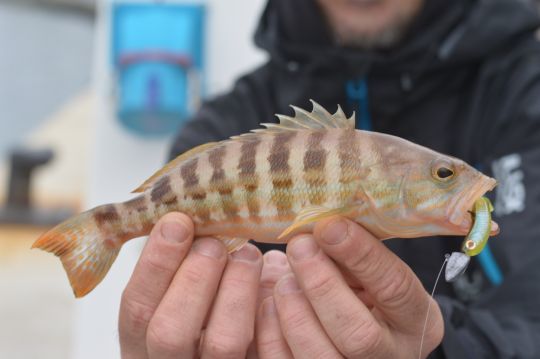
The bite often comes just after a dry shot. It's often violent and you think you're holding a fish bigger than a serran. You must strike immediately and reflexively. The tap is quite characteristic. Its violence is explained by the particular attack of the serrano. They often lie in ambush close to the bottom and literally "snipe" their prey before returning to the bottom in the same movement. This explains the very dry bite. Once hooked, the serran stubbornly holds on to the bottom. Well... Only for a few moments, as its modest size prevents it from competing with your rod.
By the way, I use a special rod for rockfishing. Here, the purpose of a full tip is not to help you feel the bite, but rather to absorb the attack, thanks to its progressive action. In fact, if you use a tip that's too stiff (fast action), you're likely to miss a good proportion of your bites and hook fewer locks.

 /
/ 